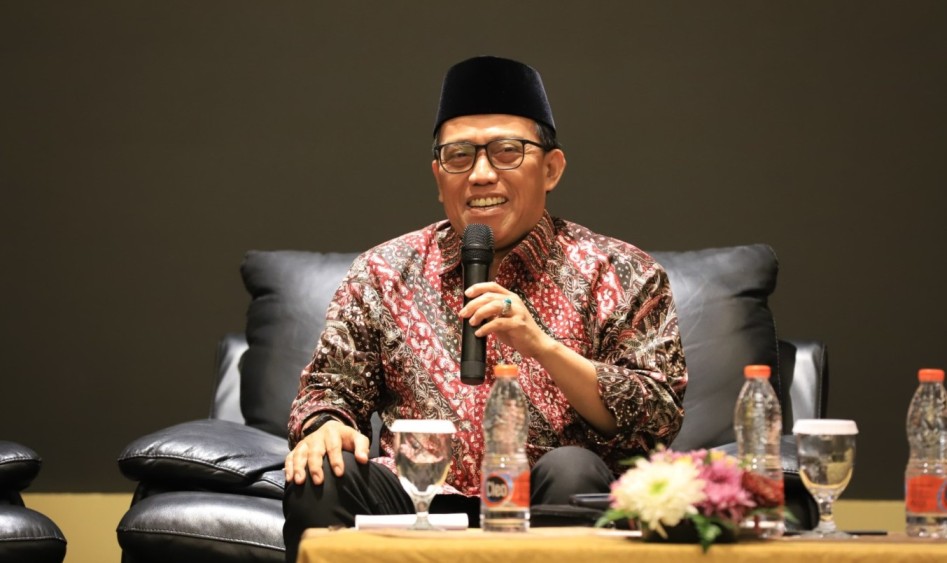Indonesian teen speaks 10 languages, learning at home

Bogor, W Java (Indonesia Window) – A person in the world generally speaks two or three languages, namely her or his local language, national language, and one foreign language which she or he learns at school.
A number of studies have found that bilingual and trilingual groups make up 43 percent and 13 percent, respectively, of the world’s total population.
Meanwhile, people with multilingual or polyglot abilities, or those who are able to speak four or more languages with the same level of proficiency, only make up 1-3 percent of the global population.
Among the small number, there is Anais Maryam Hidayah who can speak 10 languages, including her mother tongue, Bahasa Indonesia.
In addition to becoming proficient in English, which has been common among Indonesians, the eight other foreign languages learned by this 16-year-old teenage girl belong to a group that is quite complicated to learn, namely Arabic, Korean, Turkish, Japanese, Chinese, Spanish, French, and Hebrew.
Anais said that her foreign language learning practice began with learning English, when her younger brother Nicolas started to talk in this language naturally without anyone teaching him.
“I started learning when I was 8 years old, when Nicolas started talking in English,” she recalled, adding that this foreign language is relatively easy to learn and makes her more comfortable to express her opinions or feelings.
Finding enjoyment in learning foreign languages from an early age made Anais even more interested in learning other languages.
According to the eldest of four siblings, all languages in the world are captivating as each has its own appeal.
“For example, Arabic. I find this language remarkable because it has many pronouns, and is so detailed that all word structures can change. Meanwhile, Korean is amusing because it requires the ability to guess, because the subject or object in question is often not revealed. Besides that, there are many combinations of words and the written language is unique,” she explained.
Anais also found the distinct ways of speaking and writing while studying Turkish, Japanese, Chinese, Spanish, French and Hebrew.
Of all those languages, for her, Chinese is very challenging because it has various characters and the meaning of a word can change just because it is spoken in a different tone.
“On the other hand, I think Japanese is a cheerful and cute language. There are some pronunciations similar to Indonesian, but the writing is very different because Japanese has three kinds of writing, hiragana, katakana and kanji,” explained Anais.
She said that not only is learning foreign languages fun, but also has many advantages.
“There are many things I could understand from words or parables that can only found in a certain language. I have also come to understand the cultures, thoughts, characters of every nation worldwide through their languages,” said Anais, who likes to play badminton.
Learning foreign languages is also one of her small paces to take higher education abroad. “There will be more opportunities for me to study, socialize, and propagate Islam,” said the teenager who seeks to study in Turkey.
Studying
Despite grasping nine foreign languages with varying proficiency levels, none of which Anais learned in any formal school.
“I learned it using all my senses. I watch videos from YouTube or movies/dramas. I also use helpful apps like Duolingo. Then, I listen to conversations of native speakers, also I write, and read articles in original language,” explained a teenage girl of Miftah Hidayatullah and Erna Sumardiana.
In addition, she is also happy to meet and make friends with foreigners so that she has the opportunity to increase knowledge and practice her language skills.
Anais who likes to read history and geopolitics books also said that the key to learning a language is a strong motivation by setting big goals ahead, and never giving up whenever making mistakes in learning.
“We also have to find our own learning style because everyone has a different way of studying. The important point is that every day there must be time to study, at least 15 minutes is enough,” she said.
Since the early years of education, her father prefers homeschooling for Anais and her three younger siblings.
“Learning doesn’t have to be at school. Precisely with homeschooling, children have more time and opportunities to learn and explore more subjects they love and are interested in,” said Miftah.
To his children he underscored that all the matters they learn should be useful not only for themselves, but also for others.
He also requires that all knowledges and skills must always be connected to the teachings of Islam and its practice in life.
Reporting by Indonesia Window

.jpg)








